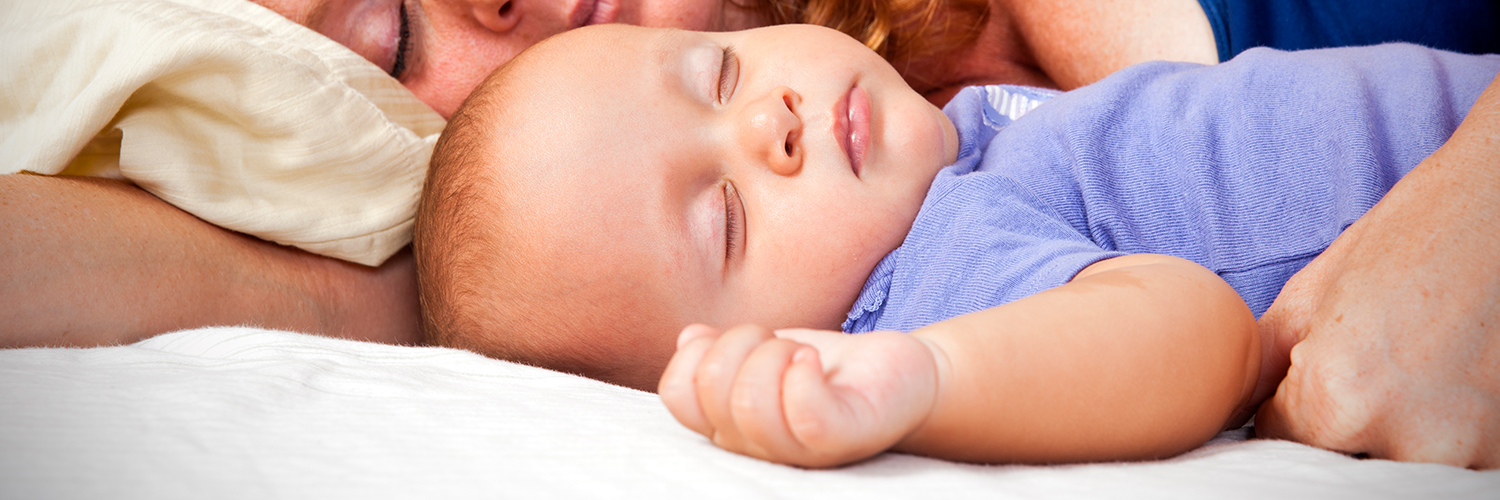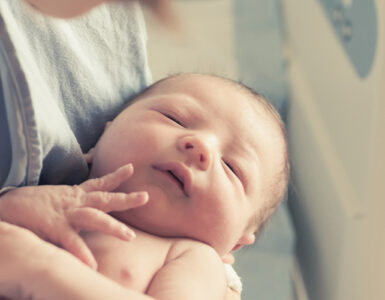While cosleeping is often seen as a way for parents to bond with their baby and simplify nighttime feedings, it comes with serious risks. Research has shown that sharing a bed with an infant significantly increases the chances of sudden infant death syndrome (SIDS) and other sleep-related dangers. That’s why experts caution against this practice, urging parents to consider safer alternatives for their baby’s well-being.
While the intimate bonding and practical benefits of cosleeping are appealing, parents should opt for room-sharing instead of bed-sharing and consult with their pediatrician to ensure their baby’s sleep environment is as safe as possible.
Why Cosleeping Is Not Recommended
The American Academy of Pediatrics (AAP) strongly advises against cosleeping (also called bed-sharing) during infancy because the sleep environment that adults typically sleep in—which often includes soft mattresses, pillows and heavy blankets—can create hazardous situations for a newborn or infant.
This environment drastically increases the chances of an infant’s airway being obstructed during the night, making it hard for the child to breathe and posing a risk of suffocation.
Research has shown that bed-sharing can multiply the risk of SIDS fivefold in infants under three months old. SIDS can also occur when babies fall asleep with adults on other surfaces aside from beds; the risk of SIDS is up to 67 times higher when infants sleep with someone on a couch, soft armchair or cushion.
In addition to being potentially dangerous, cosleeping can also disrupt sleep for both the baby and the parents. Transitioning the baby to independent sleep can become more challenging as they grow older, too. To avoid these challenges, parents can create a routine that helps the baby get used to sleeping on their own, even if they’re in the same bedroom during infancy.
Why Room Sharing is a Better Option
Experts like those at the AAP recommend room-sharing rather than cosleeping, where the baby sleeps in the same room as the parents, but on a separate surface.
A common recommendation is to sleep in the same room as your baby until they are about six months old, at which point the baby can be transitioned to their own separate room.
This setup is considered a safer alternative to cosleeping, as it has been shown to reduce the risk of SIDS by up to 50 percent. Room sharing can support better sleep practices for both the baby and the parents, while still making it easier to soothe and feed the baby overnight.
Creating a Safe Sleep Environment for Infants
The optimal sleeping setup for infants involves these elements:
- Firm, uncrowded sleep surface: Use a firm mattress in a safety-approved crib or bassinet. There should be no soft toys, loose bedding or pillows around the infant, until at least 12 months of age.
- Don’t use products for sleep that aren’t specifically marketed for infant sleep: Examples include Boppy pillows and Dock-a-tots. You can check the Consumer Product Safety Commission (CPSC) website to see if the sleep surface is safe and hasn’t been recalled.
- Placing them on their back: Babies should always be placed on their backs to sleep rather than their sides or stomachs. This position is safest and has been advocated universally to reduce the risk of SIDS.
- Once you baby is rolling well both ways (belly to back and back to belly), you do not need to keep repositioning them onto their back.
- Move infants to crib or bassinet as soon as possible if they fall asleep in car seat, swing or any inclined surface.
- Well-ventilated room: The baby’s sleep area should be well-ventilated, such as with an open window or fan, and kept at a comfortable temperature. Avoid overheating by dressing the baby appropriately for the room temperature. Babies only need one more layer than what you’re wearing. Remove any loose blankets, wearable blankets are preferred.
At Stony Brook Pediatrics, we are dedicated to offering guidance and support tailored to the unique needs of each family, helping parents navigate the challenges of early childhood safely and effectively. For more detailed information on safe sleep practices and personalized pediatric care, visit Stony Brook Pediatric Care.












